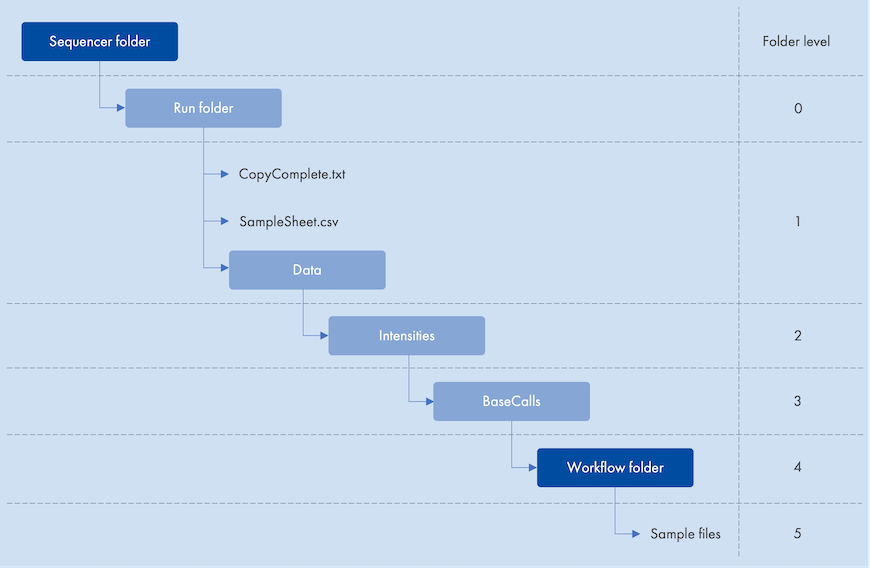Definition of folder level notation
One of the configuration settings is the Sequencer folder as described in Configuring automation settings. When a new sequencing run is started, the sequencer will output the results from the sequencing run to the sequencer folder (see example in figure 4.1).
The Workflow folder, Sample completion, and Sample sheet configuration settings point to objects inside the sequencer folder. When configuring these settings, the following format should be used:
<folder level>/<name of object>
The Batch folder configuration setting also points to an object inside the sequencer folder. When configuring this setting, the following format should be used:
<folder level>
The folder level is defined as the number of folders between the object and the sequencer folder. Following these guidelines, the configuration for the Workflow folder, Sample completion, Sample sheet, and Batch folder settings using the example in figure 4.1 should be:
- Workflow folder:
4/Workflow folder - Sample completion:
1/CopyComplete.txt - Sample sheet:
1/SampleSheet.csv - Batch folder:
0

Figure 4.1: Example of output from a sequencer
Using wildcards in object names
All settings configured using the folder level notation support the use of wildcards in the name of the object. For example, if the sample sheet file produced by the sequencer contains a timestamp in its filename (e.g. SampleSheet_20221109_092254.csv) so that the filename depends on the time the sequencer is started, the provided value for the Sample sheet setting can replace the timestamp with a wildcard:
- Sample sheet:
<folder level>/SampleSheet_*.csv
It is recommended that wildcards are only used if necessary as excessive use of wildcards increases the risk of matching objects that were not intended to be matched. For example, if the sequencer produces two workflow folders, CAT_<timestamp> and CATARACT_<timestamp>, each containing samples for particular analysis workflows installed on the CLC Genomics Server, the following Workflow folder configuration for the CAT workflow will accidentally match the CATARACT workflow folder such that samples belonging to the CATARACT workflow will also be submitted to the CAT workflow:
- Workflow folder:
<folder level>/CAT*
To prevent this from happening, the "_" in front of the timestamp should be explicitly included in the object name:
- Workflow folder:
<folder level>/CAT_*
